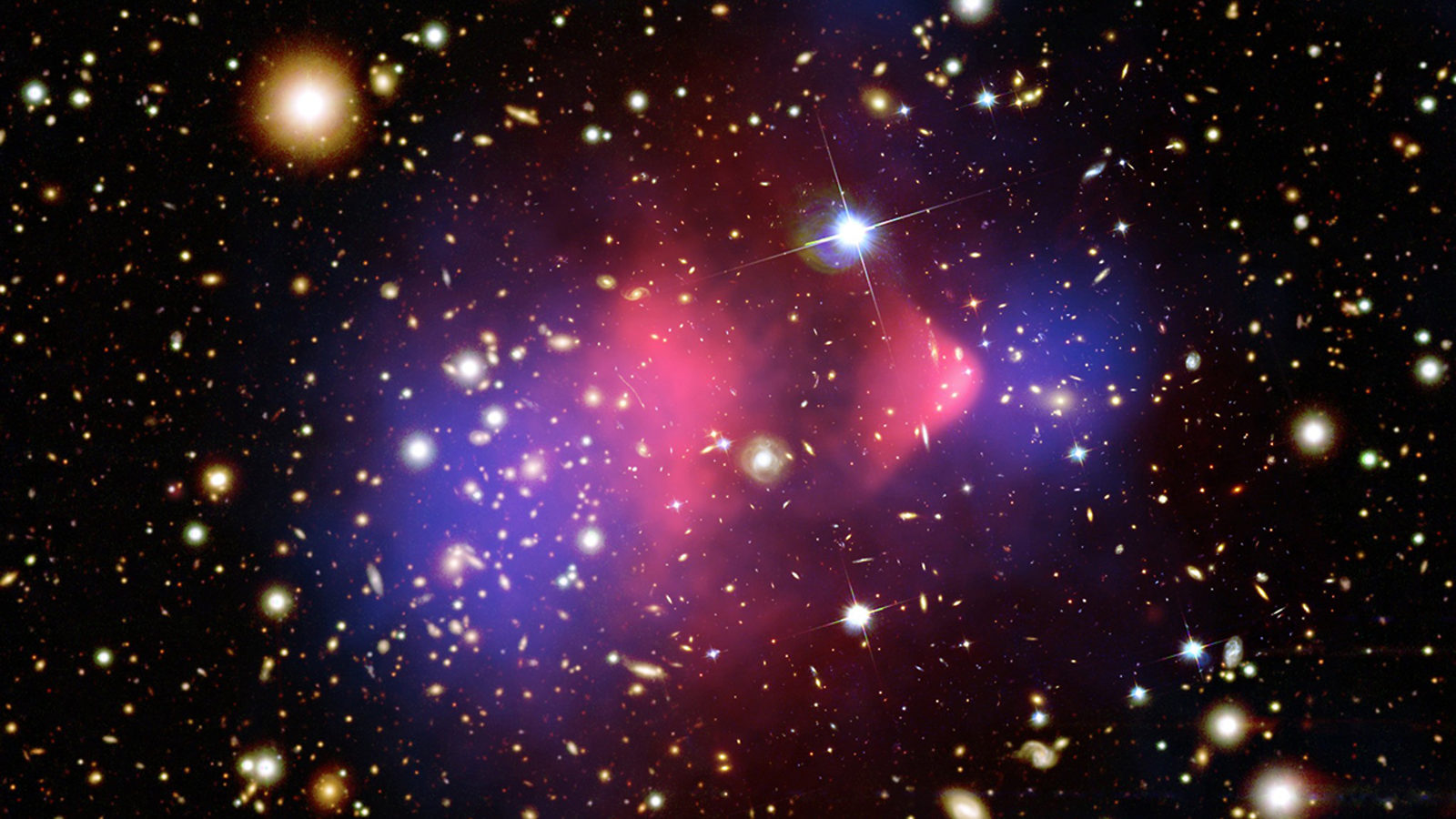Two US federal funding agencies announced today which experiments they will support in the next generation of the search for dark matter.
The Department of Energy and National Science Foundation will back the Super Cryogenic Dark Matter Search-SNOLAB, or SuperCDMS; the LUX-Zeplin experiment, or LZ; and the next iteration of the Axion Dark Matter eXperiment, ADMX-Gen2.
“We wanted to pool limited resources to put together the most optimal unified national dark matter program we could create,” says Michael Salamon, who manages DOE’s dark matter program.
Second-generation dark matter experiments are defined as experiments that will be at least 10 times as sensitive as the current crop of dark matter detectors.
Program directors from the two federal funding agencies decided which experiments to pursue based on the advice of a panel of outside experts. Both agencies have committed to working to develop the new projects as expeditiously as possible, says Jim Whitmore, program director for particle astrophysics in the division of physics at NSF.
Physicists have seen plenty of evidence of the existence of dark matter through its strong gravitational influence, but they do not know what it looks like as individual particles. That’s why the funding agencies put together a varied particle-hunting team.
Both LZ and SuperCDMS will look for a type of dark matter particles called WIMPs, or weakly interacting massive particles. ADMX-Gen2 will search for a different kind of dark matter particles called axions.
LZ is capable of identifying WIMPs with a wide range of masses, including those much heavier than any particle the Large Hadron Collider at CERN could produce. SuperCDMS will specialize in looking for light WIMPs with masses lower than 10 GeV. (And of course both LZ and SuperCDMS are willing to stretch their boundaries a bit if called upon to double-check one another’s results.)
If a WIMP hits the LZ detector, a high-tech barrel of liquid xenon, it will produce quanta of light, called photons. If a WIMP hits the SuperCDMS detector, a collection of hockey-puck-sized integrated circuits made with silicon or germanium, it will produce quanta of sound, called phonons.
“But if you detect just one kind of signal, light or sound, you can be fooled,” says LZ spokesperson Harry Nelson of the University of California, Santa Barbara. “A number of things can fake it.”
SuperCDMS and LZ will be located underground—SuperCDMS at SNOLAB in Ontario, Canada, and LZ at the Sanford Underground Research Facility in South Dakota—to shield the detectors from some of the most common fakers: cosmic rays. But they will still need to deal with natural radiation from the decay of uranium and thorium in the rock around them: “One member of the decay chain, lead-210, has a half-life of 22 years,” says SuperCDMS spokesperson Blas Cabrera of Stanford University. “It’s a little hard to wait that one out.”
To combat this, both experiments collect a second signal, in addition to light or sound—charge. The ratio of the two signals lets them know whether the light or sound came from a dark matter particle or something else.
SuperCDMS will be especially skilled at this kind of differentiation, which is why the experiment should excel at searching for hard-to-hear low-mass particles.
LZ’s strength, on the other hand, stems from its size.
Dark matter particles are constantly flowing through the Earth, so their interaction points in a dark matter detector should be distributed evenly throughout. Quanta of radiation, however, can be stopped by much less significant barriers—alpha particles by a piece of paper, beta particles by a sandwich. Even gamma ray particles, which are harder to stop, cannot reach the center of LZ’s 7-ton detector. When a particle with the right characteristics interacts in the center of LZ, scientists will know to get excited.
The ADMX detector, on the other hand, approaches the dark matter search with a more delicate touch. The dark matter axions ADMX scientists are looking for are too light for even SuperCDMS to find.
If an axion passed through a magnetic field, it could convert into a photon. The ADMX team encourages this subtle transformation by placing their detector within a strong magnetic field, and then tries to detect the change.
“It’s a lot like an AM radio,” says ADMX-Gen2 co-spokesperson Gray Rybka of the University of Washington in Seattle.
The experiment slowly turns the dial, tuning itself to watch for one axion mass at a time. Its main background noise is heat.
“The more noise there is, the harder it is to hear and the slower you have to tune,” Rybka says.
In its current iteration, it would take around 100 years for the experiment to get through all of the possible channels. But with the addition of a super-cooling refrigerator, ADMX-Gen2 will be able to search all of its current channels, plus many more, in the span of just three years.
With SuperCDMS, LZ and ADMX-Gen2 in the works, the next several years of the dark matter search could be some of its most interesting.



